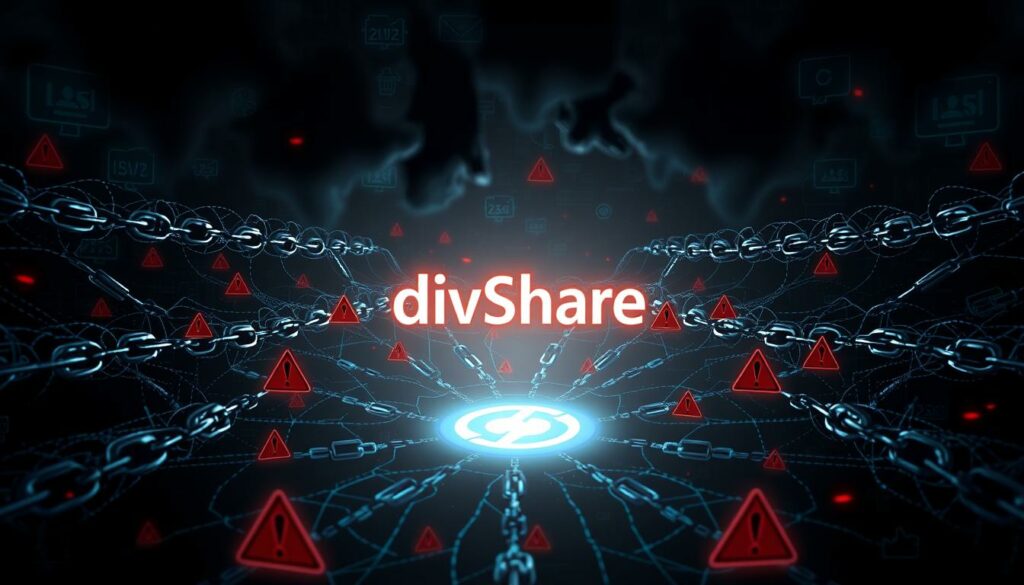Subdomain Attack: Everything You Need To Know
In the world of cybersecurity, subdomain takeover is a big threat. This sneaky attack can cause serious problems for businesses and people.
The effects of domain hijacking can be huge. It can lead to data leaks, money loss, and lost customer trust. What’s scary is that this attack is easy for hackers to do, making it popular.
We’ll dive deeper into this topic, discussing why subdomains are vulnerable, sharing examples, and discussing how to prevent attacks. Stay with us to learn how to keep your online stuff safe from this threat.
Understanding Subdomain Takeover: A Growing Cybersecurity Threat
Subdomain takeover is a big cybersecurity threat now. It happens when hackers take control of a company’s subdomain because of DNS mistakes or neglect. This can lead to serious problems like data theft and damage to a company’s reputation.
Orphaned subdomains are especially vulnerable. These are subdomains that are no longer used but still point to old services. If not checked, hackers can easily exploit these weak spots. In fact, studies show a 25% jump in web vulnerabilities, with subdomain takeovers rising 20% faster.
When a subdomain takeover succeeds, it can cause a lot of harm. Hackers might put up fake sites, try to steal personal info, or send users to dangerous places. This not only puts data at risk but can also cost a lot of money and hurt customer trust. As the internet grows, protecting subdomains is key to keeping a company’s online image safe.
Common Causes of Subdomain Vulnerabilities
Subdomain vulnerabilities often come from small mistakes in website management. Dangling DNS records are a big problem. These records point to services that don’t exist anymore, making it easy for hackers to get in.
Another issue is abandoned subdomains. When a company stops using a subdomain but forgets to delete its DNS entry, it becomes a target. This is a common weak spot.
DNS misconfiguration is also a big problem. It happens when you set up subdomains incorrectly, such as with the wrong DNS settings. Old hosting accounts or cloud platforms can also cause issues. These problems make it easy for hackers to take over.
Not keeping up with maintenance is another big issue. Without regular checks, problems can go unnoticed. Companies often forget to remove old DNS records when they move services or let domains expire. This can lead to big problems. Proper DNS management is key to staying safe online.
To avoid these problems, companies need clear rules for DNS and subdomain management. They should regularly check DNS records and keep track of services. By being careful and proactive, companies can lower their risk of subdomain takeover attacks.

How Attackers Exploit Subdomain Vulnerabilities
Attackers can use subdomain weaknesses in many ways. They create fake pages on trusted subdomains to collect personal information from users. They also send users to bad sites, spreading viruses and stealing data.
Some hackers threaten companies, asking for money in exchange for not sharing stolen information. They steal website code, change cookies, and access user accounts without permission. They also use OAuth to obtain tokens, which can harm accounts on different sites.
They can circumvent content-security policies to run harmful code. Password managers who fill in login info are also at risk. These attacks show why strong security and regular checks are key to fighting subdomain threats.
The Anatomy of a Subdomain Takeover Attack
Subdomain takeover attacks are a big worry in cybersecurity. Hackers exploit weak spots in domain management to carry out these attacks. This lets them take over subdomains.
The first step is usually DNS scanning. This helps find DNS records that are not in use. These records might come from subdomains that someone set up incorrectly or forgot about.
After finding a weak spot, hackers can create a new account or set up a server. This makes the subdomain theirs. They can then use it to spread malware or carry out other harmful actions.
A 2017 scan revealed that many domains were at risk of takeover. Hackers often target CNAME records, but NS, MX, and A records can also be vulnerable. Cloud services, like Amazon CloudFront, use subdomains for identification. If not managed well, hackers can exploit them, too. Companies need to watch their DNS records and subdomains closely.
Real-World Examples of Subdomain Attacks
Subdomain attacks have hit big companies, showing serious security issues. In 2020, researchers discovered that many Microsoft subdomains were vulnerable to takeover. This showed that even tech giants face subdomain vulnerability problems.
Tesla had a problem when attackers took over a subdomain linked to an unused AWS bucket. They used it to host a cryptocurrency scam. This shows how domain hijacking can hurt a company’s reputation and its customers.
A subdomain attack hit UNICEF and spread malware. This case showed how hackers can use old DNS records. The attackers used an outdated service to spread malware.
In 2016, a hacker got into a fundraising site for Donald Trump’s campaign. They changed the site’s pages, damaging Trump’s image. This shows how subdomain attacks can cause big problems, not just money losses.
Risks Associated With Subdomain Attacks
Subdomain attacks are a big threat to companies. They can lead to phishing scams, where hackers make fake sites to steal personal info. This can cause data breaches, exposing important customer data and company secrets.
Another big risk is damage to a company’s reputation. When hackers take over subdomains, they can use them for bad things. This can hurt the company’s image, leading to lost trust and lower brand value. It’s so serious that companies often pay £1,000 to Bug Bounty programs for reporting these issues.
The financial hit from subdomain attacks is huge. They can stop important business work, causing downtime and lost money. In fields like finance or healthcare, these breaches can bring big fines and investigations. The long-term effects can be very bad, scaring off current and future customers.

Preventing Subdomain Takeover: Best Practices
Subdomain takeover can be a serious security threat, but with the right precautions, you can safeguard your online presence. By following these best practices, you can reduce the risk of subdomain hijacking and keep your digital assets safe from unauthorized access.
- Conduct frequent audits to identify and address old or unused subdomains, reducing the risk of subdomain hijacking.
- Establish robust security protocols, including DNSSEC (Domain Name System Security Extensions), for added protection.
- Ensure effective management of cloud services to prevent unauthorized subdomain claims.
- Keep a close watch on subdomain activities to quickly detect and stop any unauthorized changes.
- Employ CNAME flattening to simplify DNS records and strengthen protection against subdomain takeovers.
Adhering to these best practices can significantly reduce the chances of a subdomain takeover and ensure more robust digital security.
Tools and Techniques for Detecting Subdomain Vulnerabilities
Finding subdomain vulnerabilities is key to keeping your online world safe. Tools like DNS scanning solutions help spot orphaned DNS records. These can be a doorway for hackers. These scanners work fast, often finding hundreds of issues in just 10 minutes for smaller domains.
Automated monitoring systems monitor your subdomains and alert you to missteps or unauthorized access. Scanning bigger domains might take a few hours, but the detailed check is worth the wait.
Tools like Subjack, SubOver, and Aqua Tone are top picks for security experts. They use different methods to identify weak spots, including checking DNS records, public searches, and SSL certificates. Some tools even perform deeper scans for more comprehensive results.
Regular security checks and penetration tests are also important. They catch things automated scans might miss. Using all these methods together helps protect your online space. It keeps your digital world safe from threats.

Legal and Ethical Implications of Subdomain Attacks
Subdomain attacks are a big deal in cybersecurity. They are becoming more common, and lawmakers need to create laws to stop unauthorized access. In the last year, 20% more domain takeovers have occurred, highlighting the urgency of this issue.
Ethical hacking helps find and fix subdomain weaknesses. In 2014, a hacker named Frans Rosén made people aware of subdomain takeovers. Even big companies like Sony, Slack, and Microsoft have fallen victim to these attacks.
It’s important to report subdomain problems the right way. Security experts who find these issues should tell companies about them. This helps companies fix problems fast, keeping user data safe and earning trust.
Companies must secure their subdomains. If they don’t, they could lose data and harm their reputation.
Researchers have found over 400,000 subdomains with incorrect CNAME records, highlighting the size of this problem.
Studies show over 1,500 subdomains of the top 50,000 websites are at risk. This shows we need to act fast to protect ourselves.
Big names like EA, Uber, and Starbucks have faced these attacks. These cases remind us all to focus on keeping our subdomains safe. Every business online is at risk, not just the big ones.
We need strong plans to fight these threats. We should monitor our domains and subdomains, check our DNS records often, and fix any weaknesses quickly.
Ensure Your Media’s Safety: Prevent Subdomain Attacks With DivShare
Subdomain attacks exploit misconfigured or inactive subdomains, allowing attackers to hijack traffic and compromise security. To prevent these risks, organizations should enforce regular monitoring, deactivate unused subdomains, and implement strict DNS controls to ensure robust protection.
Subdomain attacks can seriously risk your media content. Don’t leave your digital assets vulnerable. With DivShare, you can securely host and manage your media, leveraging advanced protection features against subdomain takeover risks. Safeguard your content and keep your assets secure by signing up with DivShare today!